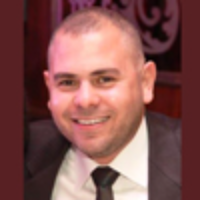Adalimumab in the Treatment of Complex Sarcoidosis-related Inflammatory Eye Disease: A Case Series
Published on: 21st May, 2024
Background: Sarcoidosis is a systemic granulomatous inflammatory disease that is associated with inflammatory eye manifestations such as uveitis, cystoid macular edema, and retinal vasculitis. Although Corticosteroids (CS) have traditionally been the mainstay of treatment, there is a clinical need and growing interest in exploring alternative therapeutic options for patients who are refractory to or intolerant of CS or require long-term steroid-sparing agents. Purpose: This case series aims to describe the effectiveness of adalimumab, an anti-tumor necrosis factor (TNF)-α monoclonal antibody, in the management of complex sarcoidosis-related inflammatory eye disease via reduction in CS dosage and ocular exam findings before and after initiation of adalimumab therapy.Method: A retrospective chart review of patients between 2010 and 2023 seen at our academic center’s rheumatology and eye clinics was conducted, with 5 patients meeting the inclusion criteria. Results: Most patients were able to lower, discontinue, or remain off oral CS, while all 5 patients demonstrated a reduction in uveitis activity, Cystoid Macular Edema (CME), and/or retinal vasculitis. Conclusion: These findings suggest a potential role for adalimumab as an effective and safe therapeutic option in the management of complex sarcoidosis-related inflammatory eye disease.
Synthesis, Radioiodination and Biological distribution of 5-(5-(tributylstannyl) benzofuran-2-yl) pyridin-2-amine as an amyloid imaging agent
Published on: 26th December, 2017
OCLC Number/Unique Identifier: 7317576309
In this work an efficient method developed for the synthesis of 125I-benzofuran-2-yl) pyridin-2-amine (125IBPA), followed by radioiodination with 125I by using Chloramine-T at pH 8. The reaction proceeds within 10 min at room temperature (20-25°C). The radiochemical yield determined by Thin-Layer Chromatography (TLC) using hexane:ethyl acetate (1:6 v/v) and the purity analyzed by high-performance liquid chromatography using a reversed-phase RP18column and acetonitrile:0.1 M ammonium bicarbonate (pH 7.5) (1:1) as the mobile phase at a flow rate of 1 ml×min−1. The radiochemical yield using aH2O2 oxidant found equal to 96.5% with a radiochemical purity of 125I-BPA of over 96.5%. The biodistribution data in normal mice indicated a high initial uptake of 6.54±0.10 (% ID/g±SD) in the brain within 30 min post-injection. These results promote a further the use of 125I-BPA as a novel agent for brain imaging.
Investigation on the occurrence of Hairy Polyp and Choristoma in Oral Cavity: A case study
Published on: 17th August, 2017
OCLC Number/Unique Identifier: 7317627576
Hairy polyp and choristoma are rare benign developmental malformations. Hairy polyp mainly occurs in the nasopharynx whereas choristoma occurs in the dorsum of the tongue. Aetiology and pathogenesis of both hairy polyp and choristoma still remain unknown. Diagnosis is made by histological examination and complete excision is the treatment of choice. We report a case of hairy polyp and choristoma on the palate and the dorsum of the tongue respectively in a seventeen days old baby.
Call to Action! Hypertension and Dyslipidemia in Mexico: Underestimated Deadly Duo
Published on: 11th December, 2024
Background: High blood pressure and dyslipidemia are risk factors that begin silently and share many pathophysiological mechanisms of tissue damage.Aim: Draw attention to this binomial (Hypertension and dyslipidemia) that is highly prevalent in Mexico and is mainly responsible for the leading atherothrombotic process as a cause of death in Mexico and the world.Methods: Reflective analysis of the evidence accumulated in the last 20 years. We launch key messages and support why every hypertensive patient should be treated with a statin.Results: We call for awareness to measure lipid levels and blood pressure twice a year from the age of 20 and to detect these devastating nosological entities as soon as possible. We remove the myth that PCSK9 inhibitors as well as the small interfering RNA of its synthesis are only for familial dyslipidemia. Measurement of serum Lp(a) should be routine, especially if you have a history of your own and family cardiovascular events.Conclusion: We should be aware of the little impact that health strategies have had to stop the main cause of death in Mexico. Every hypertensive patient should receive a statin, even if their serum LDLc levels are apparently normal. The great challenge of optimal control of the population with hypertension and/or dyslipidemia continues. The small interfering RNA synthesis PCSK9 should also be considered when conventional therapies are not sufficient and this situation is not infrequent.
Place of beta-radiation in the etiology and treatment of cataract
Published on: 9th February, 2018
OCLC Number/Unique Identifier: 7355970716
Among eye diseases, cataract is the most commonly encountered lens disease and the leading cause of reduced vision. Cataract caused by radiation develops due to neck & head, central nervous system tumors, eye localized tumors and total body irradiation. Today, the only treatment of cataract is surgery.
Beta radiation is seen to have an important place both in the etiology and treatment of cataract. Beta-radiation creates cataract in the lens as an adverse effect. However, beta radiation implementation is used for delay or prevention of cataract in glaucoma surgery. Effects of beta-radiation on the etiology and treatment should be supported by further prospective clinical studies.
Brachial Plexus Schwannoma: Report of 4 cases with Intralesional Enucleation
Published on: 28th December, 2017
OCLC Number/Unique Identifier: 7869137380
Brachial plexus tumours are rare. It comprises of only 5% of all tumours of upper limb [1]. The two most common brachial plexus region tumors are schwannomas and neurofibromas [2-4]. Both are benign and arise from the nerve sheath. XiaotianJia et al., published a large case series of 143 patients with primary brachial plexus tumors in 2016. In his series, there are 119 schwannoma and 12 neurofibromas [3]. Schwannomas are most frequently found in the head and neck region, which comprises 25% of all Schwannomas. There are only about 5% of schwannomas present as brachial plexus tumours [5].
Impedance audiometry: Stapedial reflex eliciting conditions
Published on: 20th September, 2017
OCLC Number/Unique Identifier: 7317656261
The work is an attempt to create a complete system of conditions which influence genesis, existence, and response characteristics of stapedial reflex in impedance audiometry. The author divides the conditions into the internal-reflex arc integrity, temporal acoustic summation, mixed-external auditory meatus and middle ear, and internal-side of stimulation and energy content of the stimulus. The system of conditions that influence stapedial reflex is based on a criterion, that stapedial reflex depends on energy, which is percepted by the inner ear as subjective loudness. The system of conditions stated in this work is based mainly on the author’s own experiments and measurements, which are herein also documented. At the same time, these results are in accordance with data in literature as quoted. This system is not closed-it potentially may be completed using the basic criterion and further knowledge.
Low vision due to persistent Cloquet’s canal
Published on: 26th June, 2018
OCLC Number/Unique Identifier: 7795965841
The Cloquet’s canal (CC) is the remnant of the primary vitreous and it disappears in the intrauterine developmental period of an eye. Rarely it can persist in mature eyes and cause low visual acuity. We detected a persistent CC and low visual acuity in a 36 year-old patient. Fundus fluorescein angiography and optical coherence tomography examinations were completely normal in our case and low visual acuity was directly associated with opacification of the fibrovascular persistent CC tissue. Persistent CC can cause low visual acuity due to directly media opacity effect of fibrovascular tissue without any complication.
Update on the Use of Mesenchymal Stem Cells and their Products in Hematopoietic Stem Cell Transplantation
Published on: 29th November, 2023
Graft Versus Host Disease (GVHD) is a major limitation to the success of allogeneic Hematopoietic Stem Cell Transplantation (HSCT) as Steroid-Refractory (SR) acute GVHD carries poor prognosis due to the absence of an efficacious second-line therapy. Mesenchymal Stem Cells (MSCs) which have immunosuppressive, immunomodulatory, and regenerative properties may become a highly effective therapeutic modality for SR-GVHD in the near future. MSCs have already been approved to treat childhood SR-GVHD in Japan, and they have been conditionally licensed in New Zealand and Canada. It is expected that MSCs will be approved for the treatment of SR-GVHD in adults in Europe, North America, and other parts of the world within a few years. Utilization of the recently introduced techniques including the use of MSC products such as exosomes and Extracellular Vesicles (ECVs) instead of the parent MSCs, robotic manufacturing technology, and genetic engineering of MSCs will ultimately overcome the remaining obstacles facing the widespread utilization of MSCs and their products as therapeutics not only in HSCT but also in other medical fields. The aim of this review is to provide an update on the remarkable progress achieved in the use of MSCs and their products in the field of HSCT.
Ion transporters and their molecular regulation mechanism in plants
Published on: 25th May, 2021
OCLC Number/Unique Identifier: 9057592313
With the global population predicted to grow by at least 25% by 2050, the need for sustainable production of nutritious foods is important for human and environmental health. Recent progress demonstrate that membrane transporters can be used to improve yields of staple crops, increase nutrient content and resistance to key stresses, including salinity, which in turn could expand available arable land. Exposure to salt stress affects plant water relations and creates ionic stress in the form of the cellular accumulation of Na+ and Cl− ions. However, salt stress also impacts heavily on the homeostasis of other ions such as Ca2+, K+, and NO3- and therefore requires insights into how transport and compartmentation of these nutrients are altered during salinity stress. Since Na+ interferes with K+ homeostasis, maintaining a balanced cytosolic Na+/K+ ratio has become a key salinity tolerance mechanism. Achieving this homeostatic balance requires the activity of Na+ and K+ transporters and/or channels. The aim of this review is to seek answers to this question by examining the role of major ions transporters and channels in ions uptake, translocation and intracellular homeostasis in plants.




